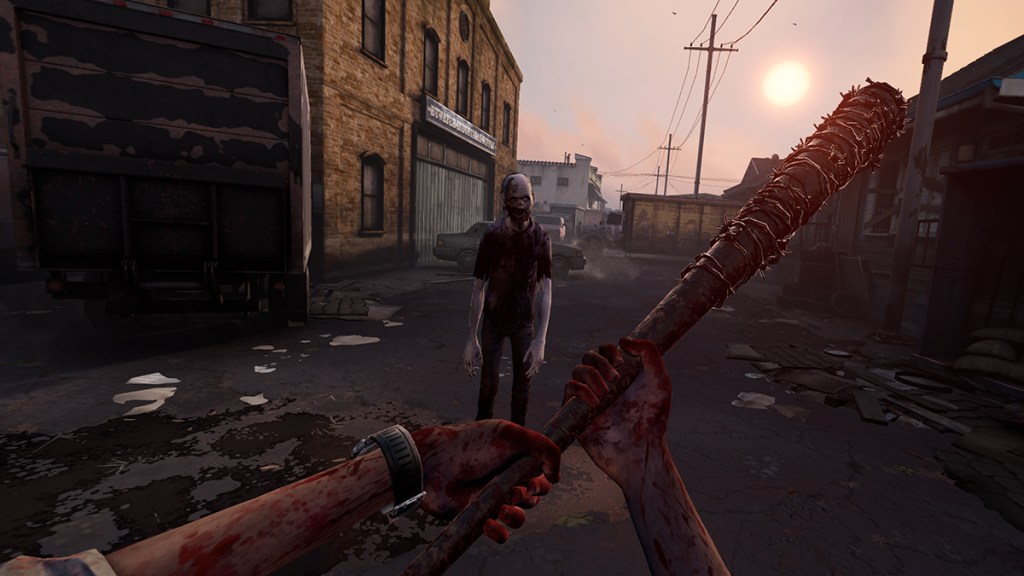The Walking Dead: Saints & Sinners was one of the better and more complete VR games with its stressful and repeatable game loop and RPG elements. There were rough spots, but it was a valiant first effort. Both this game and its sequel have finally made the jump to PlayStation VR2, and while it gives players the complete saga, the proximity of these two ports points out how insufficient The Walking Dead: Saints & Sinners – Chapter 2: Retribution is.
This is unexpected because of how similar Chapter 2 is to Chapter 1 to the point where it feels like it was supposed to initially be DLC. Not only does Chapter 2 have all eight of Chapter 1’s levels and only three new ones, but it also has the same upgrades, weapons, zombie character models, user interface, home base, and general loop of scavenging, crafting, and surviving. There are a handful of new weapons, upgrades, and items, but so much of Chapter 1 has been directly carried over that it completely overtakes and dilutes Chapter 2‘s scant additions.
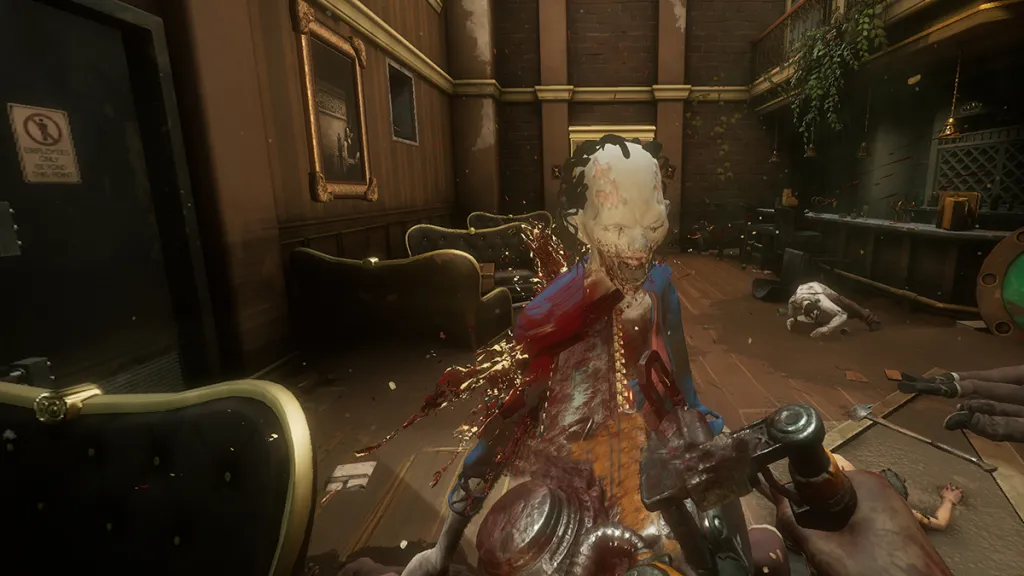
Chapter 1 was a fresh experience, yet it had problems, and Chapter 2’s failure to address those issues is what makes all the borrowed content even more puzzling. Gunplay is still inaccurate, especially the two-handed weapons that flop around wildly. This is even more pronounced in two-handed melee weapons where swings rarely register correctly, turning mighty blows to the head into little more than light taps. The gore has at least been dialed up and is quite noticeable with the new chainsaw.
Mechanical inconsistencies sit at the heart of Chapter 2’s combat troubles, but the surrounding organs have started to rot, too. Enemy A.I. for both humans and zombies jumps between brain dead and omniscient, as they won’t react to seeing their allies get blasted but will somehow occasionally have X-ray vision. The inconsistent grabbing controls makes climbing and handling weapons an absolute pain. It doesn’t always know what players want to hold, which is extremely infuriating in more finicky segments where it’ll automatically snatch the player’s notebook instead of the shotgun behind it.
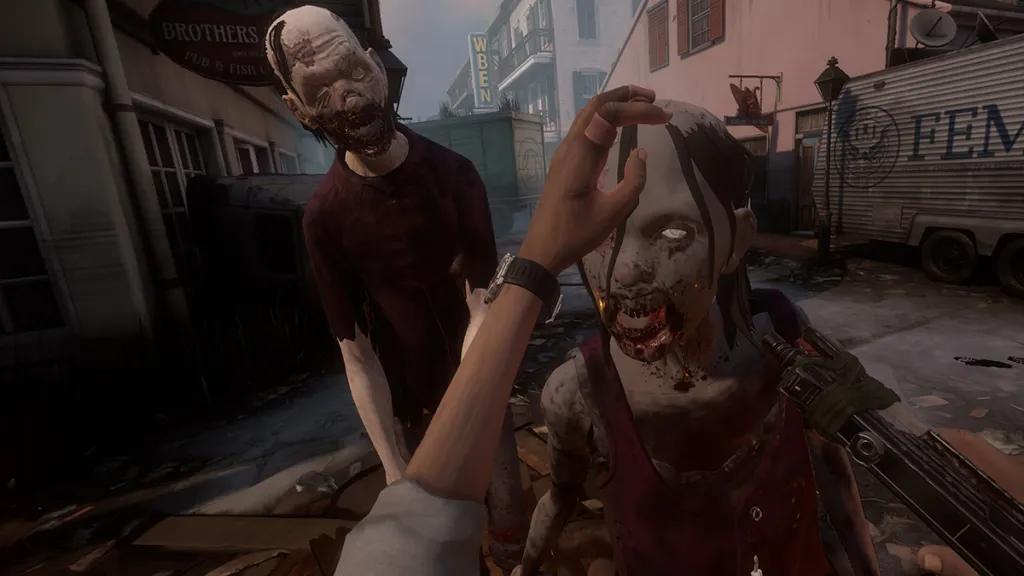
While passable the first time around, having to contend with all of these same issues just compounds and turns niggling concerns into consistent irritations. It’s also incredibly unfortunate that Skydance Interactive didn’t improve the game with this sequel, especially in lieu of excellent VR shooters like Resident Evil Village, a title that Chapter 2 could learn a lot from.
Its design also highlights these deficiencies. Chapter 1 could occasionally have swarms of the undead, but Chapter 2 doubles down on combat, which is why its shortcomings are easier to notice. Zombies can roam in greater numbers and some maps are overrun with them. The game hands out more deadly weapons to handle these hordes, but that only means players have to contend with its fidgety controls while under more pressure.
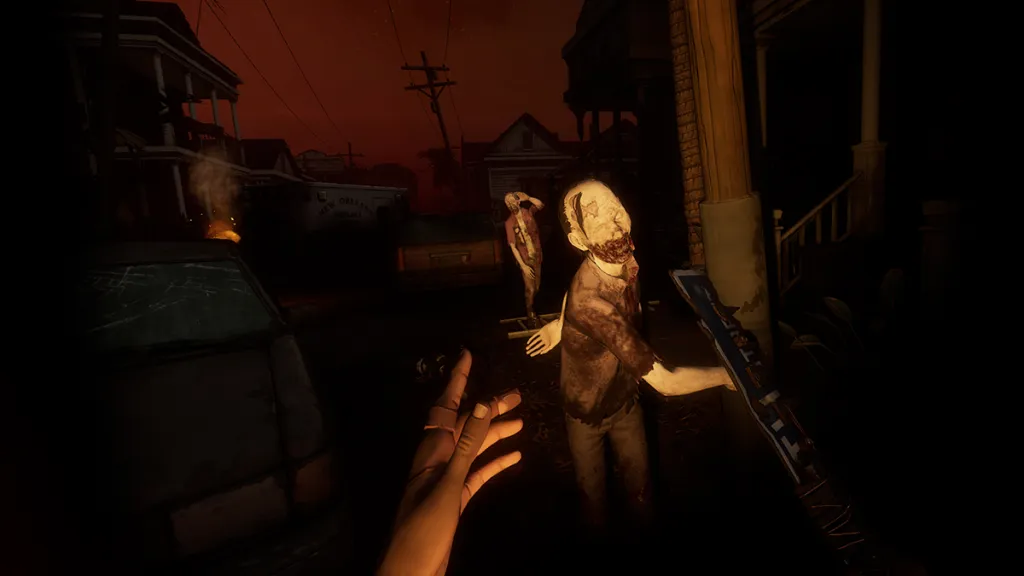
Going out at night is one new aspect in Chapter 2 and is where the game more successfully dials up the tension. Different supplies and special missions also show up when the moon is out, offering up more of an incentive to travel while it’s dark. Limited visibility makes these runs more stressful and that can be exhilarating, but the special missions that open up during the night are surprisingly hollow.
These new exile missions are a drag since they task players with finding certain items, and it’s all a tedious exercise. Having to slowly skulk around to find these semi-hidden figures only to have to venture back out in the depths to scrounge up menial items like headphones or frying pans is not worth the effort. It would be more streamlined if these traders met players near the spawn point so it would be easier to gather these items on the way to other objectives. The current setup places more importance on them than they deserve since these hollow errands should be little more than something players do as they complete other missions.
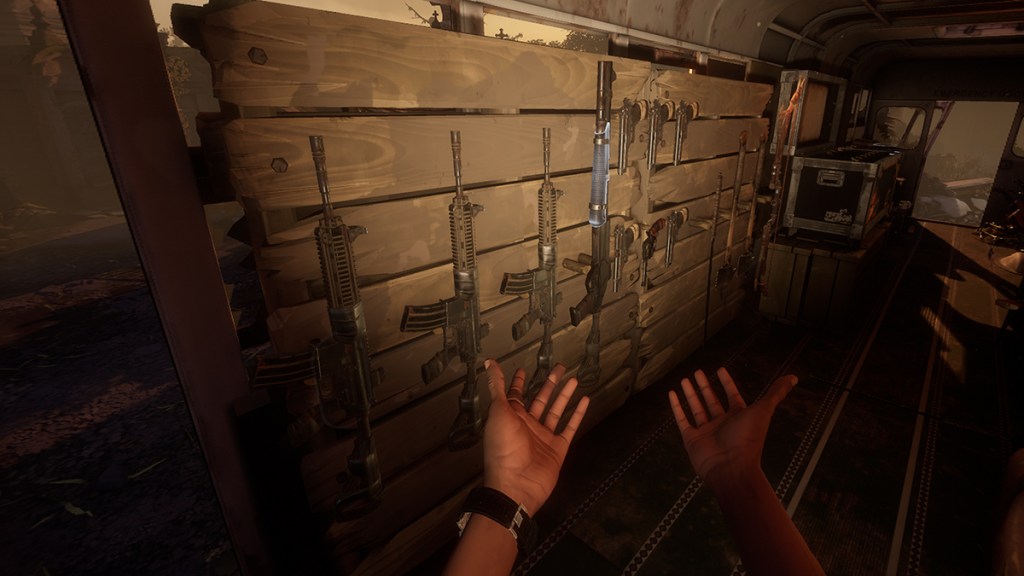
Many of the other missions are quite typical, as they mostly still revolve around scavenging and upgrading. But Chapter 2 guts that core upgrade loop by allowing users to import saves from the first game. Carrying over progress is theoretically great since it gives more weight to what players did last time, but it trivializes the upgrade economy, which is the central pillar of the game.
Most players who finished the first game will likely have a stockpile of unused weapons and maxed out upgrade trees, putting them at a clear advantage out of the gate. Running through the two new upgrade trees only takes a couple missions, too. Starting a fresh save also doesn’t solve this oversight since having to unlock the same exact upgrades from the first game once again (although it automatically unlocks some of them) is not new or exciting. Downsizing the incentive to gather more resources and upgrades means Chapter 2 loses its structure and is monotonous because of it.
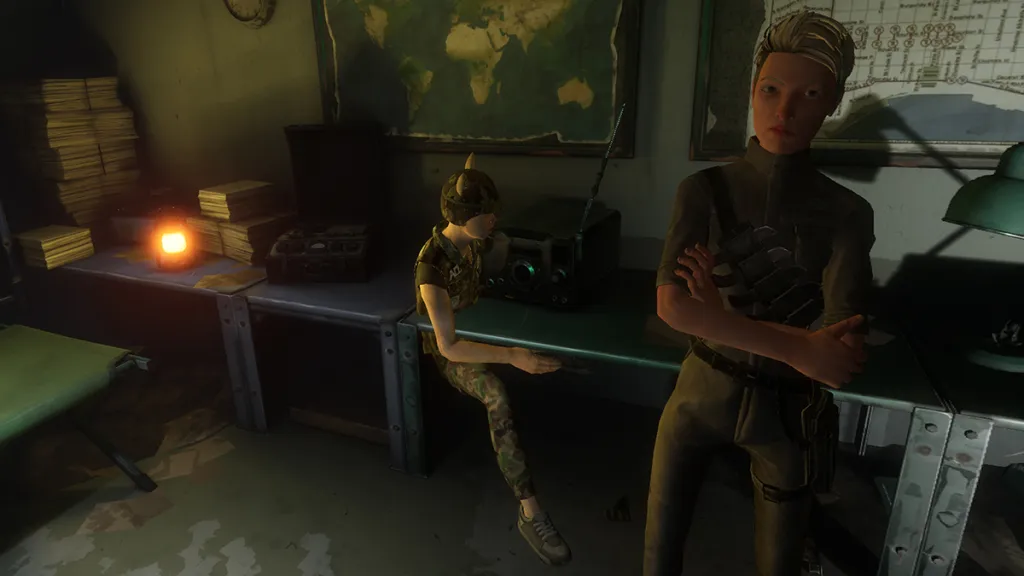
Chapter 2 is a disappointing follow-up because of how closely it mirrors the first game and utterly fails to build on top of it, but it’s even more of a letdown because of how buggy it is. Skydance has been dealing with a unstable game since the title first debuted on the Meta Quest 2 in December 2022, and its PS VR2 launch hasn’t been much better. One collectible breaks if players import a save. A ton of the trophies don’t work. Some exile missions inexplicably disappear. Invisible zombies can swarm players. Visual glitches from NPCs clipping through the environment, lighting outright breaking, or levels failing to load in happen constantly.
While Skydance has been issuing updates that have fixed a few of its problems, Chapter 2 is still unforgivably messy. According to multiple reports on its Discord server, it can still crash or impede progress — or wipe it altogether — at a moment’s notice, which is not the kind of tension this zombie game needed. My playthrough came to a screeching halt during the final mission since it crashes every single time I try to load any of my saves; a fatal bite right at the finish line.
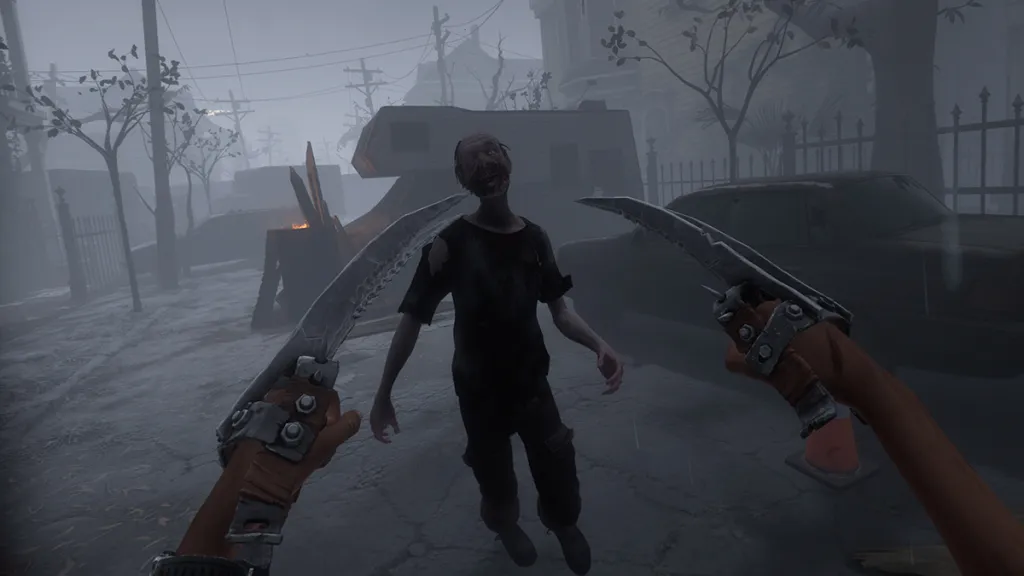
Chapter 1 is not only more technically sound (and has better draw distance and lighting on PS VR2 when compared to the original port), but also is a much more tightly paced and complete game. Since importing progress isn’t an option, the upgrade curve is smoother and leads to a more consistent experience. And while Chapter 2’s frustrating control problems were also present in this first title, they’re a little easier to overlook since Chapter 1 isn’t as heavy on the combat. It’s a simpler and more straightforward game, but one that makes fewer mistakes.
Chapter 1 has aged relatively well and makes Chapter 2 seem even worse by comparison. It fails to meaningfully build upon its predecessor since it not only unabashedly repeats the same gameplay loop and adds little to it, but also takes out some of the incentives that were key to its success. Reusing so much and not moving forward has turned something that was novel into a more laborious game that doesn’t have its own identity. The shoddy technical performance only exacerbates all of these problems and acts as the nail-ridden bat to the head. This sequel will probably get better over time as Skydance patches it up, but many of its problems are structural ones that updates almost assuredly can’t solve, meaning Chapter 2 will likely always shamble in Chapter 1’s shadow.
Disclosure: The publisher provided PlayStation 5 copies for our The Walking Dead: Saints & Sinners and The Walking Dead: Saints & Sinners Chapter 2: Retribution feature. Played on version 1.001.000 and 1.004.000, respectively.
